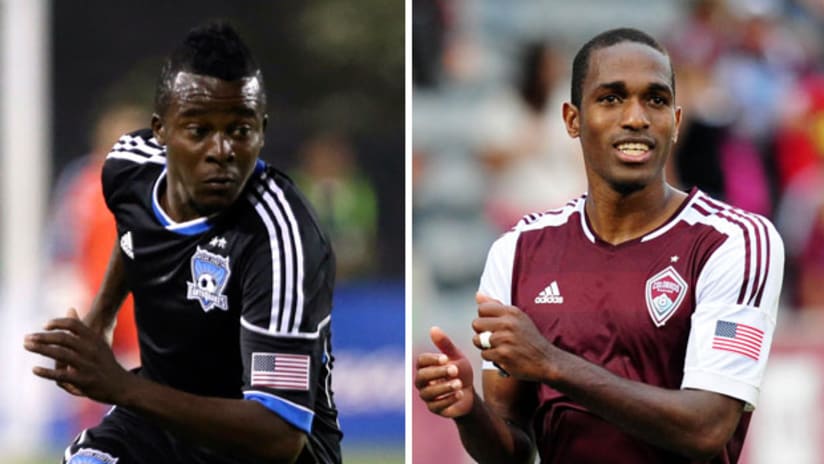When San Jose and Colorado decided to swap attackers on Tuesday, they did so knowing that they weren't doing a like-for-like flip. Marvin Chávez and Atiba Harris are, after all, very different players.
After a sterling 2012 season in which he collected 13 assists, Chávez’s 2013 was hampered by injuries. For Harris, 2013 was a bounce-back year after playing very little with the Whitecaps in 2011 and 2012 thanks to injuries, and he finished with a career-high five goals.
But not only were these players' last couple seasons vastly different, their playing styles are as well.
One difference that immediately jumps out is each player’s passing numbers. In 2013, Harris had the worst pass completion rate among all outfield players who played at least 1,000 minutes, completing only 61 percent of his 726 passes. He also passed poorly in the final third, completing only 50 percent of his 382 passes. This was second-worst among all non-goalkeepers and defenders who played 1,000 minutes.
Some of this can be blamed on what Harris was asked to do by head coach Oscar Pareja – but that would only explain some of his inaccuracy. When going back to 2011 and 2012, given a much smaller sample size, Harris completed 67 percent of his 204 passes and 47 percent of his 98 passes in the final third over the two years combined.
By comparison, Chávez completed 76 percent and 61 percent of his total passes and passes in the final third, respectively, in 2013.
One area where Harris excels, and can be considered elite, is winning balls in the air. In 2013, Pareja used Harris as a target – even though he mostly played out on the wing – asking his players to consistently launch the ball up to Harris’ head. He led MLS in 2013 with 239 aerials contested, 33 more than the next-closest player. He won 148 of these aerials, also the most in the league, for an aerial winning percentage of 62 percent.
While this percentage is not among the league leaders, it is hardly a number to overlook, considering how many he contested. Harris attempted an aerial every 8.4 minutes he was on the field, good for the second-highest rate amongst players who played at least 1,000 minutes. Sitting at first and third in that statistic are his new teammates, Steven Lenhart (8.0) and Alan Gordon (9.5), which should give San Jose even more authority in the air than they already boasted.
While Chávez can hardly compare to Harris in terms of his aerial prowess, he excels in other areas: taking players on, crossing, and creating chances.
In 2013, Chávez was one of only two players to rank in the top 25 in minutes per open-play crosses, minutes per dribbles attempted, and minutes per chance created (min. 1,000 minutes played). He shined crossing the ball, completing 30 percent of his open play crosses, good for 16th among players to attempt at least 20 open play crosses. He accomplished this in consecutive seasons, and in 2012 he finished 10th among all players in chances created and third in assists.
So while Harris is a hybrid, Chávez is something else: a pure winger, and one who knows how to create goals.
Who won this trade? Unclear, from a numbers standpoint. It will probably be more about how the coaches tailor their gameplans to the elite, specific skillset each player brings to the table.












